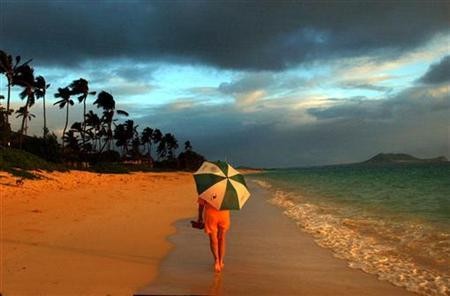A new study shows that beachgoers such as surfers and sunbathers might need to be more concerned about the bacteria in sand than the germs in polluted ocean water. Research of Hawaiian beaches found higher amounts of microbes from fecal contamination such as from e. coli bugs, in grains of sand than in seawater.
The lead author of the research team was Tao Yan from the University of Hawaii (Manoa). He noted that marine beach sand is often contaminated by wastewater. This can in turn become a major source of bacteria in beach seawater.
Health experts have knownfor quite some time that wastewater from sources such as factories and homes can cause seawater contamination. Some days it even shuts down beaches.
Last year the National Resources Defense Council learned that around 10 percent of United States beaches have pollution, which is mostly raw sewage, according to Salon. However, the big concern was swimmers.
Swimmers who contact or swallow the polluted water can experience various symptoms. They include rashes, stomachaches, diarrhea, and hepatitis.
However, the situation has worsened during the past decade. Scientists have recorded fecal bacteria levels on beaches' sand that are up to 100 times higher than in the bordering seawater.
Scientists became curious. They made lab simulations of sewage-contaminated seawater and beaches, to learn how bacteria populations alter as time passes.
The laboratory simulations revealed that bacteria decayed significantly slower in sand than in water. This could explain why there is usually more fecal bacteria on beaches than in seawater.
The researchers explained that wastewater bacteria can bury deep in "biofilms" in microorganism-friendly sand, where it is insulated from sunlight, according to CBS News. Sunlight slows down germ growth.
Yan's team learned that not just ocean H20 should be evaluated in terms of water quality and public health. Beach sand is also a big factor.
Beachgoers can follow some basic safety tips to avoid fecal contamination. They include wearing shoes and sitting on large beach blankets.
The study's findings were recently published online in the journal Environmental Science &Technology.



























